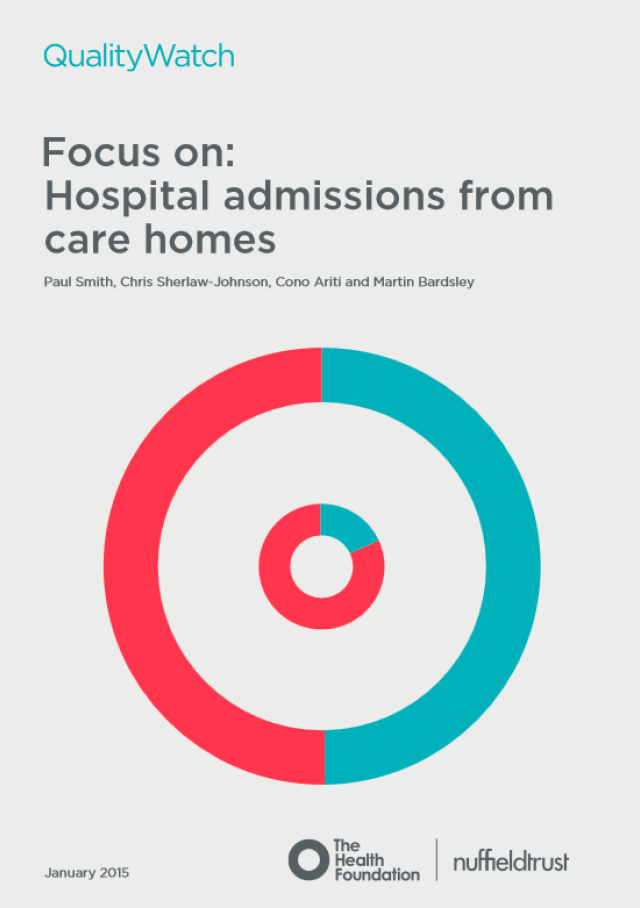QualityWatch: Focus on hospital admissions from care homes
January 2015

Key points
- Older people living in a care home postcode had 40–50% more emergency admissions and A&E attendances than the general population of the same age, but significantly fewer planned admissions and outpatient appointments.
- Patterns of hospital admissions from areas containing care homes were often linked with people who were in the last few months of their life. However, care homes appear to help prevent emergency admissions in the final two months of life.
- Certain conditions were over three times more common in areas that had more care home residents. These include: pneumonia, pneumonitis, Alzheimer’s disease, dementia and epilepsy. Care home patients were also less likely to be admitted for heart disease and circulatory system problems.
- Areas containing a care home showed significant variation in hospital admission rates. This suggests that intelligent monitoring of hospital activity could provide a useful measure of care home quality.
- Our findings raise important questions about the use of hospital services by care home residents, and how they can prompt improvement in the way care is provided.
This analysis from QualityWatch, a joint Health Foundation and Nuffield Trust research programme, explores how care home residents use hospital services, and how this information could prompt improvement in the way care is provided.
An estimated 325,000 older people live in care homes in England, representing around 4% of the total population aged 65 and over. Given that the number of older people in the UK is projected to double in the next 20 years, understanding the quality of care being delivered to residents will be of increasing importance to policy makers, commissioners and providers.
Despite this, information about the quality of care provided in residential and nursing homes is not always easy to access. In the health sector, the use of hospital admissions as markers of potentially avoidable harms has a long track record. This study shows how these ideas can be translated to the care home sector. Care home residents are among the frailest in society and depend on good integration between health and social care services. This means they are particularly at risk of emergency hospital admissions.
Our research used de-identified person-level data to analyse hospital admission rates among people aged 75 and over, for small geographical areas, from April 2011 to March 2012.
Many of the datasets that would be required for external monitoring of care homes may take some time to establish, and indicators relating to hospital admissions will need careful handling in terms of both validation and interpretation. However, monitoring by individual providers could be made much easier to implement with the appropriate statistical tools and supporting software.
Ultimately, such measures would need to be tested to see how much they can prompt beneficial change in the system, but this report is a useful step on that journey.
QualityWatch is a major research programme from the Nuffield Trust and the Health Foundation that provides independent scrutiny into how the quality of health and social care is changing over time.
Work with us
We look for talented and passionate individuals as everyone at the Health Foundation has an important role to play.
View current vacanciesThe Q community
Q is an initiative connecting people with improvement expertise across the UK.
Find out more

